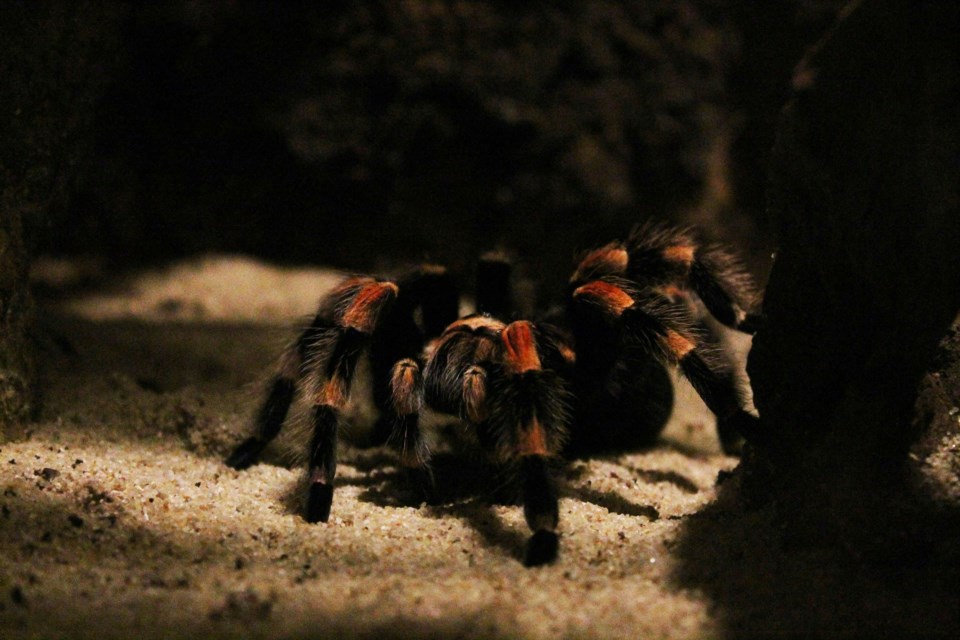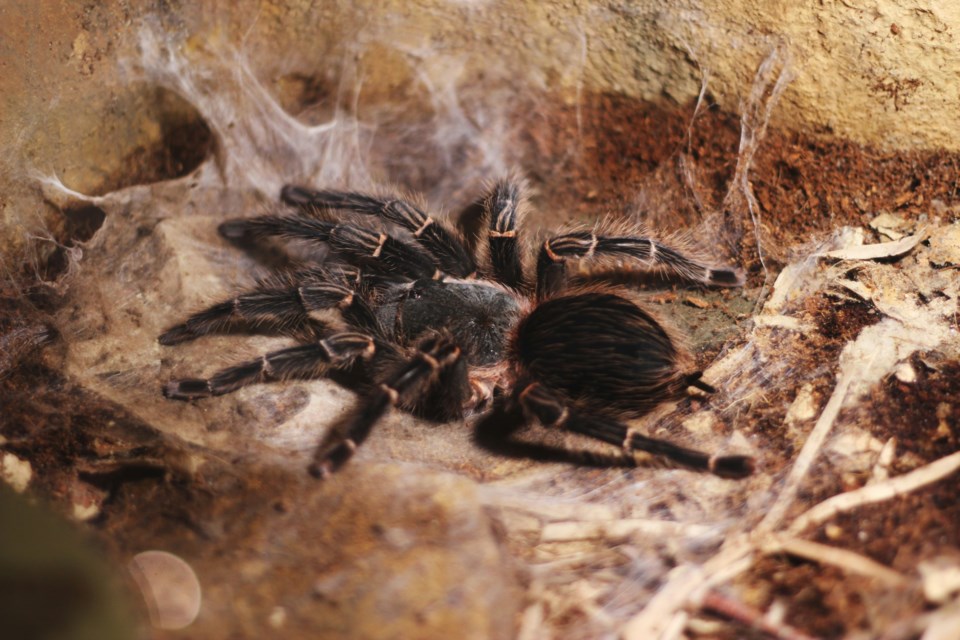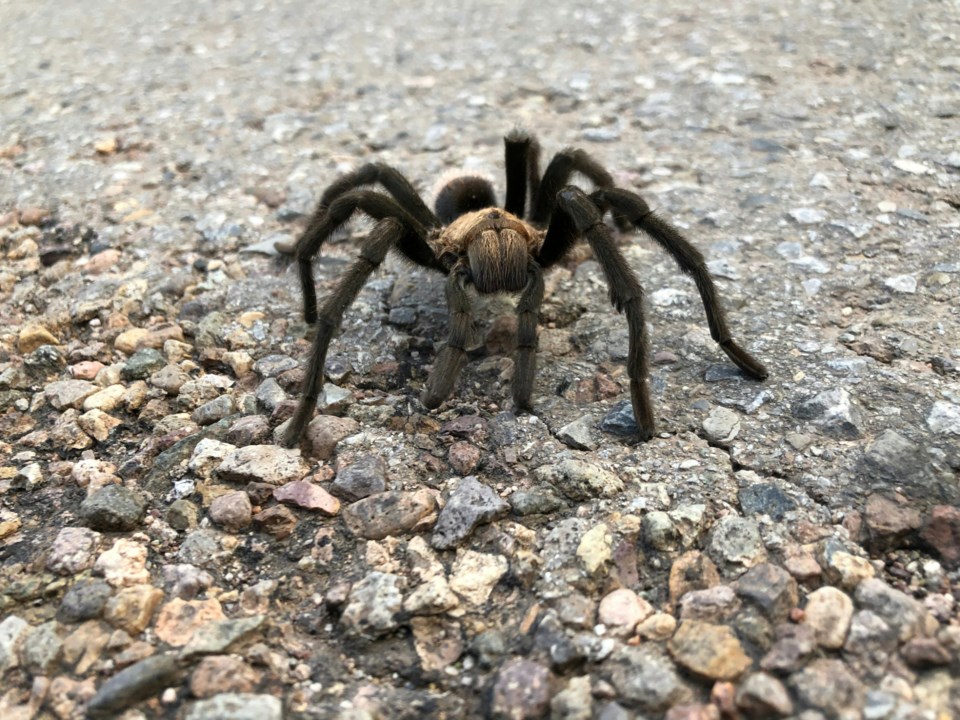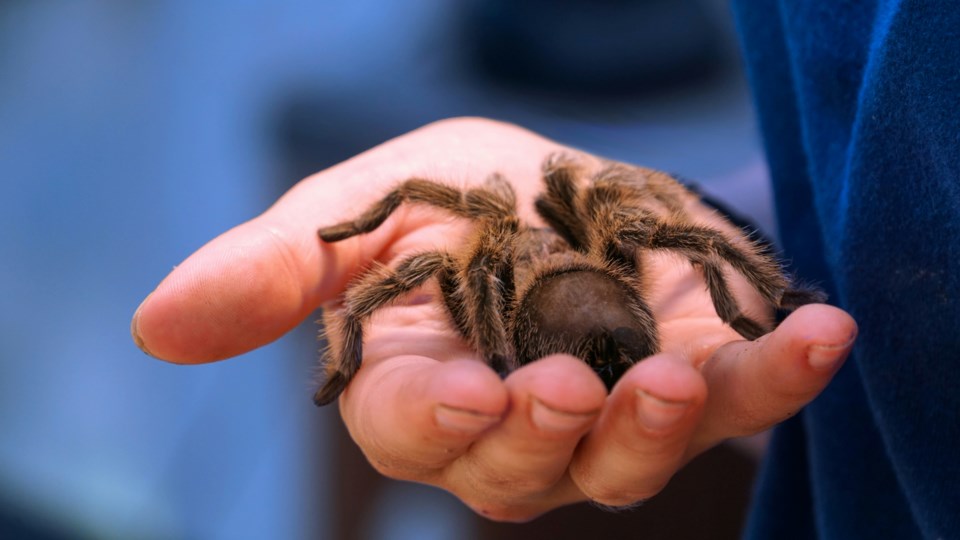Each fall, a fascinating natural event unfolds in southeast Colorado as tarantulas emerge in search of mates. Known as the tarantula migration, this phenomenon attracts nature enthusiasts to the Comanche National Grassland near La Junta. These male tarantulas, specifically the Colorado Brown Tarantula, trek across the plains, creating a captivating display of wildlife. While often misunderstood, tarantulas are harmless and play a vital role in the ecosystem. Discover the beauty and wonder of the tarantula migration in Colorado and learn how to experience it responsibly.
What is the Tarantula Migration?

The tarantula migration in Colorado is a fascinating natural event, though it’s not an actual migration. Instead, it’s a mating ritual performed by male tarantulas as they venture across the landscape in search of females. These large spiders traverse the open prairies, particularly in the Comanche National Grassland, showcasing an impressive display of determination and survival instincts. This phenomenon has gained attention for its scale and uniqueness, making it a must-see event for nature lovers and wildlife enthusiasts.
This annual ritual occurs during the late summer and early fall, with peak activity happening in September. As temperatures drop and the season transitions, male tarantulas leave their burrows to begin their journey, often crossing highways, trails, and open fields. Their goal is singular: to locate a mate among the females who typically remain near their burrows. This behavior highlights the fascinating and essential role these creatures play in their ecosystem, contributing to the delicate balance of nature in southeastern Colorado.
Where to Spot Tarantulas in Colorado

Highway 109, Highways 10, 350, and Nearby County Roads
Highways 109, 10, and 350, along with the county roads connecting them, are some of the best areas to spot tarantulas during their migration in Colorado. These routes cut through the scenic landscapes of the Comanche National Grassland, where tarantulas are often seen crossing the open terrain. The spiders are most active during the early evening, making this a prime time for a drive along these roads. Remember to respect traffic and avoid sudden stops to ensure safety for yourself and others.
Vogel Canyon: Hikes, Picnics, and Tarantula Spotting
Vogel Canyon is a favorite destination for tarantula spotting, offering a mix of recreational opportunities like hiking and picnicking. Located just 15 miles from La Junta, the area features several trails leading to breathtaking canyon views where you may encounter these fascinating creatures. The trails vary in difficulty, making Vogel Canyon accessible for families and adventurers alike. Sheltered picnic areas provide a great spot to relax while keeping an eye out for tarantulas.
Timpas Picnic Area: Scenic and Convenient
The Timpas Picnic Area, about 20 miles from La Junta along Highway 350, is another excellent location for tarantula viewing. This peaceful spot features picnic shelters and easy access to the surrounding grasslands, making it convenient for a quick stop. Visitors often enjoy the blend of scenic beauty and the thrill of spotting tarantulas in their natural habitat. Late afternoon and early evening hours are ideal for catching a glimpse of the spiders as they emerge.
Delhi: A Hotspot for Tarantula Activity
Delhi, a small community located 36 miles from La Junta on Highway 350, is known for its tarantula activity during the migration season. The quiet roads and open prairies in this area make it a prime location for spotting male tarantulas on their mating trek. Visitors may also appreciate the serene atmosphere and unique opportunity to observe nature up close. Always stay mindful of private property boundaries while exploring this area.
When to View the Tarantula Migration

The best time to witness the tarantula migration in Colorado is just before dusk, typically between 5:45 PM and 6:45 PM. During this golden hour, male tarantulas are most active, roaming the open grasslands in search of mates. Mid-September to October marks the peak season for this phenomenon, although the exact timing can vary based on weather conditions. Warm evenings with little wind provide the optimal setting for observing these fascinating creatures.
While the migration typically winds down by October, some activity may continue into early November, particularly during mild autumns. For those planning a trek, it’s important to be patient and observant, as tarantulas don’t travel in large groups. You might see just a few at a time or none at all, depending on the day and location. Regardless, the serene beauty of the grasslands at sunset makes the experience worthwhile.
Protecting the Habitat and Heritage
The tarantula migration takes place in areas rich with fragile ecosystems that need careful preservation. Visitors are encouraged to stay on designated trails and roads to avoid damaging the native prairie or disturbing burrows where tarantulas and other wildlife reside. The Comanche National Grassland is also home to delicate soil structures and other natural features that can be easily harmed by off-trail exploration.
This region is steeped in history, with cultural artifacts and ancient rock art that tell stories of past civilizations. To protect these irreplaceable treasures, refrain from touching or altering any artifacts or drawings. Practicing responsible tourism not only ensures the preservation of these historical sites but also honors the natural beauty and heritage of southeast Colorado.
How to Prepare for a Tarantula Trek
Preparation is key for a safe and enjoyable tarantula trekking adventure. Start by packing the essentials: plenty of water, snacks, a map, and emergency supplies in case of unexpected situations. Since cell service can be unreliable in remote areas, download maps or mark your route beforehand. Comfortable, sturdy shoes are a must for navigating uneven terrain, and dressing in layers will help you stay comfortable as the temperature changes in the evening.
Visibility is crucial, especially if you’re viewing tarantulas near roadways. Wearing bright or reflective clothing, such as an orange vest, can help motorists and hunters spot you easily. Avoid wearing tan or white, which can resemble the colors of pronghorn and potentially cause confusion during hunting season. By preparing thoroughly, you can ensure your safety while enjoying the unforgettable spectacle of tarantula migration in Colorado.
Responsible Viewing Tips for a Memorable Experience
Observe from a Safe Distance
When observing tarantulas during their migration, it’s essential to admire them from a safe distance. These creatures are harmless to humans if left undisturbed, but handling them can cause unnecessary stress or injury. Their protective hairs can also cause mild irritation, so it’s best to let them remain in their natural habitat while you take photos or enjoy the view.
By keeping your distance, you also avoid provoking the tarantulas into defensive behavior. Remember, this is their mating season during the tarantula migration in Colorado, and interrupting their journey could impact their survival.
Avoid Stopping in Unsafe Areas
Stopping your car abruptly on busy roads or highways to observe tarantulas can create hazardous conditions for both yourself and other drivers. If you want to take a closer look during the tarantula migration in Colorado, find a safe place to pull off where your vehicle is completely off the road. Always ensure there’s enough space for passing traffic to avoid accidents or bottlenecks.
Road safety is particularly crucial in rural areas where visibility might be reduced and traffic can include fast-moving trucks. By planning ahead and scouting safe viewing spots, you can minimize risks while enjoying the migration. Remember, tarantulas may be harmless, but roadside dangers are not.
Stick to Designated Trails
Staying on designated trails or marked paths is vital for preserving the fragile grassland ecosystem. Tarantulas rely on undisturbed prairies to nest and hunt, and stepping off trails can inadvertently damage their burrows or other critical habitat features. These burrows may have been occupied for decades, so protecting them ensures the species continues to thrive.
Additionally, wandering off-trail can harm the soil and vegetation, which are already susceptible to erosion. Stick to the trails during the tarantula migration in Colorado, not only for the benefit of the tarantulas but also to avoid getting lost or encountering unsafe terrain. Respecting the natural environment allows everyone to enjoy the beauty of the region for years to come.
Don’t Disturb Burrows
Tarantulas create burrows that they use for protection and nesting, often for many years. It’s important not to disturb these structures during the tarantula migration in Colorado, as doing so can displace the spiders and expose them to predators. Avoid poking at or blocking their paths; these spiders are on a critical journey during their mating season and need to move freely.
Allowing tarantulas to continue their migration without interference helps maintain their population and ecosystem role. By giving them space, you contribute to their survival and get to observe their fascinating behavior without causing harm.
Respect Property Boundaries
Much of the tarantula migration in Colorado takes place in areas bordered by private property. Respect posted signs, fences, and gates to avoid trespassing. Crossing into private land without permission can disrupt the local community and strain relationships between landowners and visitors.
By staying on public lands and respecting boundaries, you help preserve the harmony of rural life and ensure continued access to prime tarantula-viewing locations. Always follow the rules and guidelines of the area you’re visiting to make your trip safe and enjoyable for everyone involved.
FAQs About Tarantula Migration Colorado
What is the best time of year to see tarantulas in Colorado?
The best time to see tarantulas in Colorado is during mid-September through October, particularly around dusk. This is when the tarantula migration is most active, as male tarantulas search for females to mate. The cooler temperatures and quieter environment at dusk make it an ideal time to observe these fascinating creatures.
Are tarantulas in Colorado harmful to humans?
Tarantulas in Colorado are generally harmless to humans unless provoked. While they have venomous fangs, their bite is not dangerous and is similar to a bee sting. However, it’s best to avoid disturbing them to prevent any defensive reactions.
Where is the best place to watch the tarantula migration?
The best places to watch the tarantula migration in Colorado are Highways 109, 10, and 350, which are located near La Junta. Additionally, Vogel Canyon in the Comanche National Grassland offers an excellent viewing opportunity. These areas are part of the tarantula’s preferred habitat and provide a great chance to see them in action.
What should I bring on a tarantula viewing trip?
When heading out for a tarantula viewing trip, make sure to bring essentials like water, snacks, sturdy shoes, and layered clothing to prepare for changing weather. Additionally, it’s important to bring maps of the area, as cell service may be unreliable in remote spots.
Do tarantulas actually migrate?
Tarantulas in Colorado don’t actually migrate in the traditional sense. Instead, they participate in a mating ritual during the fall, where male tarantulas roam across the landscape searching for females to mate with. This event is often referred to as a migration, but it’s more about reproduction than long-distance travel.
Can I handle or capture tarantulas?
It is not recommended to handle or capture tarantulas during their migration. Handling them can cause stress or injury to the spiders, and it’s unnecessary for observing or enjoying the experience. It’s best to admire them from a safe distance and respect their natural behavior.
What other wildlife might I see during the migration?
During the tarantula migration in Colorado, you may also encounter other fascinating wildlife, such as tarantula hawks (the spider-hunting wasps), rattlesnakes, and a variety of prairie animals. These creatures play essential roles in the local ecosystem and contribute to the unique natural experience.
Is the tarantula migration family-friendly?
Yes, the tarantula migration is a family-friendly activity when proper safety precautions are taken. Children and adults alike can enjoy observing these fascinating creatures in their natural habitat. However, be sure to respect the environment, stay on designated trails, and always prioritize safety when near busy roads or wildlife.
Conclusion: Witness Nature’s Marvel
The tarantula migration in Colorado is a unique and awe-inspiring natural event that’s worth experiencing. By planning your visit responsibly, you can enjoy this fascinating mating ritual while respecting the wildlife and their delicate habitats. Whether you’re an avid nature enthusiast or a casual observer, this is an opportunity to witness the wonders of Colorado’s wildlife in a way that’s truly special.
As you explore the tarantula migration, remember that the preservation of both the tarantulas and their habitat is crucial. By staying on designated trails, respecting private property, and observing the creatures from a safe distance, you contribute to the conservation efforts in the region. Let this experience spark curiosity and deepen your appreciation for the incredible diversity of wildlife in Colorado—there’s always something new and wonderful to discover!



